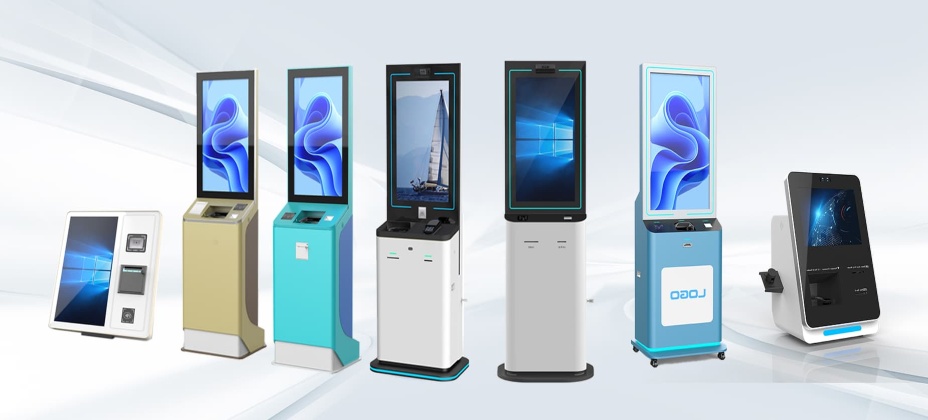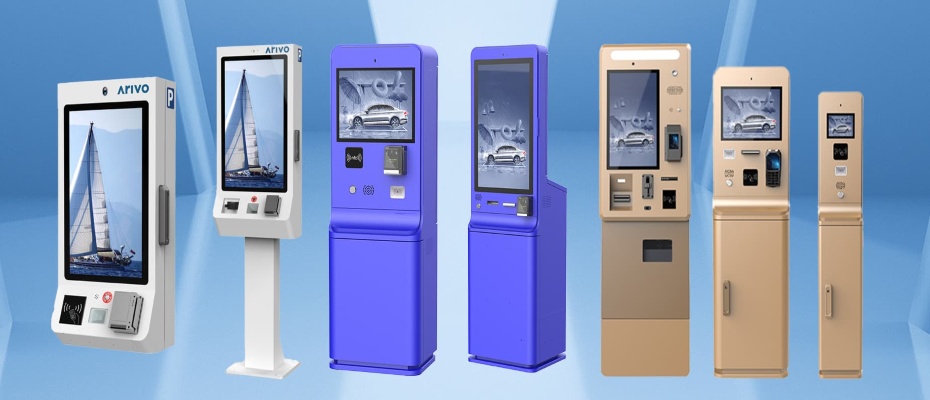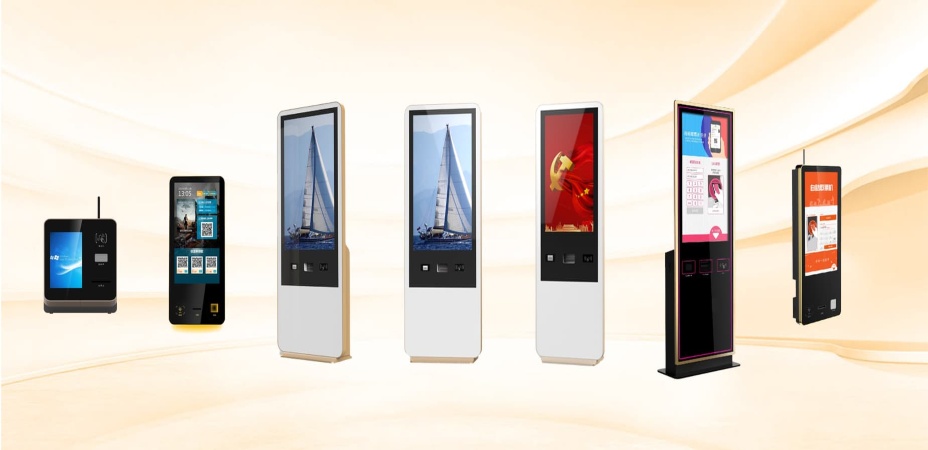Kiosks have become an integral part of our daily lives, offering convenient solutions in various settings from restaurants to airports. These self-service machines are designed to enhance efficiency, reduce wait times, and improve the overall customer experience. But what is a kiosk? A kiosk is a self-service machine that allows users to complete various transactions or access information without human assistance. In this article, we will explore the different types of kiosks, how they work, their benefits, and applications across various industries.
A kiosk is a self service machine designed to facilitate transactions, provide information, or enhance customer engagement in various public settings. Typically featuring a touchscreen interface, kiosks enable users to perform tasks such as ordering food, making payments, checking in for flights, or accessing information. They are commonly found in places like restaurants, airports, malls, and hospitals. Kiosks improve operational efficiency by reducing wait times and minimizing the need for staff assistance, allowing businesses to enhance the customer experience. Their versatility and user-friendly design make them increasingly popular across multiple industries.
Below is a video overview of kiosk, Here, I will use a video to deepen your intuitive understanding of what is a kiosk and what kiosk is. Through the video, you can see what kind of machine a kiosk is, how it works, the styles and designs available, and their efficiency.
Kiosks come in various forms, each serving distinct functions:
1. Self Ordering Kiosk
2. Payment Kiosk
3. Information Kiosk
|
|
| 4. Check-in Kiosk
5. Ticketing KioskDescription: Allow users to purchase tickets for movies, events, or transportation. They provide real-time seat selection and payment functionalities, usually equipped with printers. Applications: Cinemas, concerts, sporting events. 6. Vending Machine Kiosks
|
7. Customer Service Kiosk
8. Parking Kiosk
9. Healthcare Kiosk
|
|
| 10. Interactive Kiosk
11. Mobile Kiosks
12. Enterprise Self-Service Kiosk
|
Understanding how kiosks function helps appreciate their value in modern operations:
Touchscreens: The primary interface for user interaction, touchscreens allow for intuitive navigation and enhance the user experience through responsive design and graphical interfaces. They can be customized to display dynamic content and support multiple languages, making them accessible to a wider audience.
Payment Systems: Kiosks integrate various payment systems, including credit card readers, mobile payment options like NFC and QR codes, and even cash acceptance. These systems ensure secure transactions through encryption and comply with industry standards, offering customers multiple payment options to enhance convenience.
Software Solutions: The backend technology that powers kiosks is crucial for managing transactions, updating content, and analyzing user data. Sophisticated software can support features like inventory management, user authentication, and analytics, enabling businesses to optimize operations and tailor services to customer needs.
Internet Connectivity: Essential for cloud integration, kiosks rely on robust internet connectivity for real-time data updates and remote management. This connectivity enables seamless communication with back-end systems for inventory tracking, analytics, and updates to promotional content, ensuring kiosks operate efficiently and remain relevant.
Security Features: Advanced security protocols are vital for protecting user data and transaction integrity. Kiosks often incorporate features like biometric authentication, encryption, and secure payment gateways to mitigate risks and build customer trust.

Kiosks offer numerous advantages across various sectors:
For Businesses:
| For Customers:
|
Kiosks find applications in various sectors, offering tailored solutions that enhance efficiency and user experience:
RetailSelf-Checkout Kiosks and self ordering kiosk: These kiosks allow customers to scan and pay for their items independently, reducing wait times and freeing up staff for more personalized customer service. They often feature user-friendly interfaces and support various payment methods. HospitalityCheck-in Kiosks: Streamlining operations in hotels and airports, these kiosks enable guests to check in quickly, receive room keys, or print boarding passes. This reduces queues and enhances the overall guest experience. HealthcarePatient Check-In Kiosks: By allowing patients to check in digitally, these kiosks minimize paperwork and administrative delays in hospitals. They can also collect patient information securely, helping streamline the registration process. EntertainmentTicketing Kiosks: Located in cinemas, theaters, and event venues, these kiosks simplify the purchasing process for tickets, allowing customers to choose seats, make payments, and print tickets on the spot, thus reducing congestion at box offices. |
|
| Public ServicesInformation Kiosks: Found in government offices and public spaces, these kiosks provide essential resources such as forms, FAQs, and service information. They help citizens access vital information easily and efficiently. TransportationWayfinding Kiosks: These kiosks assist travelers in navigating transportation hubs like airports and train stations. They provide real-time information on arrivals, departures, and routes, enhancing the travel experience. EducationCampus Kiosks: Used in schools and universities, these kiosks offer students access to schedules, campus maps, and event information, promoting engagement and facilitating navigation around the campus. Food and BeverageSelf-Service Kiosks: In quick-service restaurants, these kiosks allow customers to place orders and pay without waiting for staff assistance, leading to faster service and increased order accuracy. |
The future of kiosks looks promising, with several trends emerging that will significantly enhance their functionality and user experience:
Enhanced Customer Interaction: By leveraging AI and machine learning, kiosks can analyze customer data in real-time to provide personalized recommendations, improving the overall user experience. For example, kiosks can suggest menu items based on previous purchases or preferences.
Predictive Analytics: These technologies enable kiosks to predict peak times and customer flow, allowing businesses to optimize staffing and inventory levels. This can lead to improved service efficiency and reduced wait times.
Natural Language Processing (NLP): Implementing NLP allows kiosks to understand and respond to customer inquiries in natural language, enhancing communication and making the technology more user-friendly.
Seamless Transactions: The integration of mobile payment solutions, such as digital wallets and QR code scanning, facilitates quick and secure transactions. This is particularly relevant in post-pandemic scenarios, where hygiene concerns are paramount.
Remote Ordering: Customers can place orders via mobile apps and pick them up at kiosks, reducing congestion and wait times. This trend is particularly beneficial in fast-casual dining and retail environments.
Enhanced Security: With the rise of contactless payments, kiosks are increasingly equipped with advanced security measures to protect user data, such as tokenization and biometric authentication.
Eco-Friendly Designs: Kiosks are increasingly being designed with sustainability in mind, using recyclable materials and energy-efficient components. This shift not only reduces environmental impact but also appeals to eco-conscious consumers.
Energy Efficiency: Future kiosks will likely incorporate smart technology to optimize energy use, such as motion sensors that power down screens when not in use and LED lighting to minimize electricity consumption.
Waste Reduction: Kiosks can help reduce waste through features like digital receipts, minimizing paper use, and offering reusable containers for food service kiosks, aligning with broader sustainability goals.
As technology evolves, the kiosk industry will continue to innovate, integrating advanced features that enhance user experience, promote sustainability, and improve operational efficiency. Businesses that embrace these trends will be well-positioned to meet the changing needs and expectations of consumers in the years to come.

When selecting a kiosk, it's essential to consider several key factors to ensure it meets your business needs effectively:
1. Define Your Use Case
| 2. Customization Options
|
3. Budget Considerations
|
|
 | Maintenance and Support
|
Choosing the right kiosk for your business requires a thorough understanding of your specific needs, budget constraints, and support options. By carefully evaluating these factors, you can select a kiosk that not only enhances operational efficiency but also improves customer engagement and satisfaction.

Costs can vary significantly based on the type and features, typically ranging from a few hundred to several thousand dollars.
Virtually all industries, including retail, healthcare, hospitality, and entertainment, utilize kiosks to improve efficiency.
By providing quick, convenient service, reducing wait times, and offering personalized interactions.
Key components include the touchscreen interface, payment systems, software, and connectivity options.
See more faqs you can click kiosk faqs
Kiosks are revolutionizing how businesses interact with customers, offering convenience, efficiency, and enhanced service. With a range of applications across various sectors, the value of kiosks is undeniable. Whether you’re a business owner or a customer, understanding kiosks can help you appreciate their role in modern society.
Interested in exploring kiosk solutions for your business? Contact us today for more information on how kiosks can enhance your operations and improve customer satisfaction!